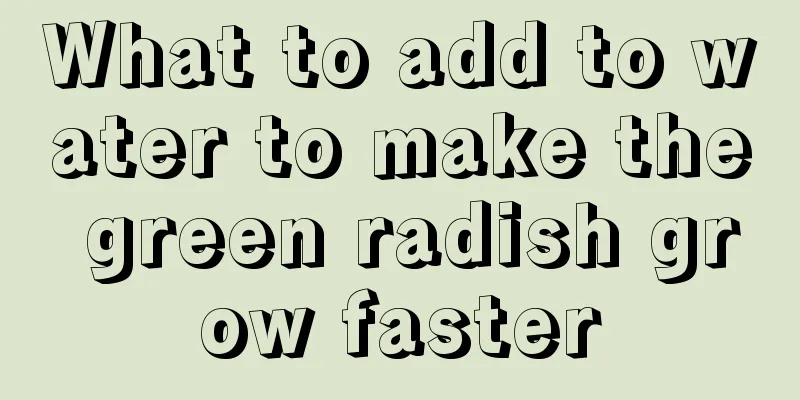Mint planting methods and techniques

|
Mint is loved by people for its fresh scent. There are many varieties, and some varieties can not only be used for making tea and eating, but also have multiple uses. Placing a pot of mint at home can not only prevent insect pests, but its refreshing fragrance is especially pleasant in the summer and brings a cool feeling. Placing it in the living room or balcony can also prevent mosquitoes from approaching, and its lush green appearance is also quite ornamental. Below is a brief introduction to the methods and techniques of growing mint. 1. How to water mint When caring for mint, especially indoors or in a poorly ventilated environment, using ceramic pots may cause the soil to remain moist for a long time, affecting root breathing and causing root rot, leaf falling, and yellowing leaves. Therefore, indoor mint should be watered after the soil is slightly dry, and frequent watering should be avoided. It is recommended to use plastic pots instead of porcelain pots, and water them thoroughly after planting, then place them in a ventilated and cool place to slow down the growth of the seedlings, and then carry out normal maintenance. Outdoor mint has good light and ventilation, so you can water it more often and it won't easily suffocate the roots. 2. Mint needs plenty of sunlight Although mint is hardy, it also needs plenty of sunlight, whether it is diffuse light or full sun. If mint is kept in an environment with insufficient light for a long time, its branches and leaves will become sparse and its growth will be slow. Therefore, make sure your mint gets enough sunlight to maintain its lush growth. 3. Mint needs regular fertilization Mint grows quickly, especially in spring and early summer when warm weather favors its rapid growth. As long as the soil is fertile and there is enough water and light, mint will grow wildly. When fertilizing, avoid using concentrated fertilizers or raw fertilizers to avoid burning the roots. The correct approach is to apply thin fertilizers frequently, that is, apply a small amount of fertilizer at a time, and then water thoroughly to dilute the fertilizer, which can both replenish nutrients and not damage the plants. If you follow the above maintenance tips, mint will not only grow luxuriantly, but also provide fresh leaves for use at any time. Have you ever grown mint?
|
<<: Green radish planting methods and techniques
>>: Planting methods and techniques of fortune tree
Recommend
When and how to prune azalea
1. Pruning time It has strong vitality and can be...
How to cultivate cymbidium to grow well
Cymbidium Orchid Growth Conditions The suitable g...
Is the yield of glutinous rice high? What is the yield per mu?
Is the yield of glutinous rice high? The yield of...
How many years does it take for a longan tree to bear fruit?
Introduction to Planting Longan Trees Longan tree...
What is rooting water and how to use it
What is root water? Rooting water refers to the w...
The difference between Chinese rose and rose
1. The difference between flowers From the appear...
Where is sea buckthorn seedling suitable for planting
Sea buckthorn sapling planting area Sea buckthorn...
5 Plants That Have the Power to Repair Soil
Indian mustard Indian mustard is a plant belongin...
How to water Areca palm
Daily watering and maintenance of Areca palm Arec...
The complete method of breeding Jade
Jade Mang's Sowing Sowing time April to June ...
Can the Staghorn Begonia bloom in winter?
Can it be opened in winter? First of all, let me ...
How to plant lotus, how to plant lotus seeds
1. Prepare seeds Before planting, select the seed...
The efficacy of bergamot fruit, pictures of bergamot fruit
1. Efficacy 1. Anti-asthma: Bergamot fruit contai...
Cultivation technology of yellow fruit
Huangpi fruit , also known as Huangpi, Huangpi or...
Why can't we plant sunflowers at home?
1. Insufficient indoor lighting You can actually ...









